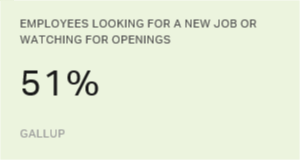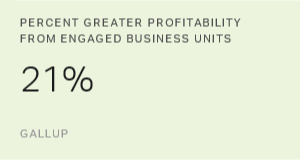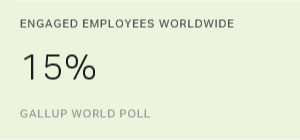Earlier this year, online craft marketplace Etsy came under public scrutiny after new investors balked at the long list of lavish perks offered at its Brooklyn headquarters.
Along with a community loom and crafting classes, the company had also renovated its office for $40 million, which included adding irrigated walls to grow plants, according to Quartz. Though these perks reinforce the cultural values of the organization, investors questioned if they distracted workers from achieving overall business success and outcomes.
Etsy's perks-driven culture is the latest in a trend toward more exotic perks to woo talented employees. In recent years, some companies have proudly shown off their go-kart tracks, basketball courts, giant slides, concierge services and on-site acupuncture to make the case that they are a "great place to work."
But as companies begin to consider how they try to win over employees, it's critical that they avoid racing after trends that may initially attract workers, but will ultimately fail to retain them. After all, these perks may be alluring at first, but companies need to make sure they're not overlooking the fundamental benefits and perks for which most job seekers are actually looking.
Employees Would Switch Jobs for These Benefits and Perks
According to Gallup's recent State of the American Workplace report, employees categorically say they would be willing to leave their current job for one that offers greater flexibility and financial rewards.
Gallup data indicate that most organizations offer some level of the benefits job seekers are looking for, such as health insurance, paid vacation and 401(k)s; nevertheless, employees still indicate they'd leave a job for these benefits.
This suggests that many employers are under-delivering on the quality of these offerings. Key lesson: You may already have the benefits your employees want, just not at the level they would like.
There are also some benefits and perks that employees are seeking but many companies simply don't offer.
| Employees who would change jobs to have | Employees who say their company offers | Difference | |||||||||||||||||||||||||||||||||||||||||||||||||||||||||||||||||||||||||||||||||||||||||||||||||
|---|---|---|---|---|---|---|---|---|---|---|---|---|---|---|---|---|---|---|---|---|---|---|---|---|---|---|---|---|---|---|---|---|---|---|---|---|---|---|---|---|---|---|---|---|---|---|---|---|---|---|---|---|---|---|---|---|---|---|---|---|---|---|---|---|---|---|---|---|---|---|---|---|---|---|---|---|---|---|---|---|---|---|---|---|---|---|---|---|---|---|---|---|---|---|---|---|---|---|---|
| % | % | (pct. pts.) | |||||||||||||||||||||||||||||||||||||||||||||||||||||||||||||||||||||||||||||||||||||||||||||||||
| Flexible working location where you can choose to work off-site full time | 35 | 12 | -23 | ||||||||||||||||||||||||||||||||||||||||||||||||||||||||||||||||||||||||||||||||||||||||||||||||
| Profit-sharing | 40 | 20 | -20 | ||||||||||||||||||||||||||||||||||||||||||||||||||||||||||||||||||||||||||||||||||||||||||||||||
| Flexible working location where you can choose to work off-site part time | 37 | 24 | -13 | ||||||||||||||||||||||||||||||||||||||||||||||||||||||||||||||||||||||||||||||||||||||||||||||||
| Retirement plan with a defined benefit (pension) | 51 | 43 | -8 | ||||||||||||||||||||||||||||||||||||||||||||||||||||||||||||||||||||||||||||||||||||||||||||||||
| Monetary bonuses | 54 | 47 | -7 | ||||||||||||||||||||||||||||||||||||||||||||||||||||||||||||||||||||||||||||||||||||||||||||||||
| Flextime | 51 | 44 | -7 | ||||||||||||||||||||||||||||||||||||||||||||||||||||||||||||||||||||||||||||||||||||||||||||||||
| Gallup | |||||||||||||||||||||||||||||||||||||||||||||||||||||||||||||||||||||||||||||||||||||||||||||||||||
Based on Gallup's research, today's workers want to be able to work off-site full time (35%) or even part time (37%), though few employers offer that option.
In addition, employees would also prefer financial benefits, such as profit-sharing (40%), pensions (51%) and monetary bonuses (54%), and say they would be willing to change jobs to receive these benefits.
Although there are many reasons why employers are not able to provide these kinds of benefits, clearly there is a disconnect in some instances between what employers offer and what employees want.
How to Evaluate Your Perks and Benefits
Many organizations we talk to are beginning to think more holistically about taking care of their employees. In doing so, they need to consider that employees today are looking for employers that offer a total rewards package -- one that supports the lifestyle they want to have today and in the future.
So where should employers begin? Our experience tells us that there are four essential questions to ask first:
1. Do your benefits and perks align with your culture?
Employers need to be mindful of what they are offering employees and if the workday, the culture and the management philosophy actually allow for the use of these perks.
We've worked with employees who were initially attracted to an organization that offered an array of flashy perks, and yet, employees rarely had the time or the freedom to use them. Paradoxically, in our experience, unused pingpong tables, basketball courts and even fitness centers served as a reminder of the life the employee was promised but one that was unattainable because of their heavy workload.
A better investment of time and money would be to survey employees in a scientifically rigorous way to understand which current benefits and perks are most rewarding, which drive the highest retention rates and which benefits, if offered, would be warmly received.
2. Do your benefits and perks take into account employees' changing needs?
Life changes have an impact on every part of the traditional benefits packages, from child care to healthcare to retirement programs. To retain exceptional talent over the long term, employers must offer a total job package that takes care of employees over their entire career and in different stages of their life.
Benefits and perks should follow a lifecycle approach, in which employees' needs are met in their early, mid- and late career. If not, employees may reluctantly transition to a new employer because their lifestyle has changed -- without ever considering potential accommodations.
3. Do your employees know what your perks and benefits are?
It is worth repeating that employers may offer the desired benefits and perks, but employees are still stating that they would be willing to leave their current position to receive a higher level of the same benefit. Companies should keep taking a pulse on these needs and adjusting when possible.
Gallup has also discovered that, in spite of available benefits and perks, many employees are unaware of them or do not remember all that their company offers. It may be time to reintroduce underused perks to your team or find better ways of sharing information about them. Perhaps a 100+ page document is not be the best way to communicate different offerings. To achieve this, some companies are implementing company apps, videos and surveys that help serve up information based on an employee's specific needs and interests.
4. Is flexibility part of your total perks and benefits package?
Companies need to determine how they currently offer benefits and perks that allow for autonomy and flexibility in how work gets done. Not all companies or positions can offer the same level of flexibility, but employers need to think of employees as talented individuals with rich lives and consider their health, and community and social interests. Allowing talented individuals the freedom to live the life they want ultimately drives performance.
Flexibility doesn't always have to relate to time. Some roles and industries make flexible time difficult, so consider other ways people can change up their routine and control their day, things like job sharing, casual dress and optional collaborative workspaces.
Retaining World-Class Talent Requires Long-Term Thinking
Most employees do not leave a job for benefits and perks alone -- pay, management and career growth remain the top reasons for leaving a job -- but a competitor's benefits are more attractive when employees are less engaged at work. Unfortunately, most employees in the U.S. are either not engaged (51%) or actively disengaged (16%), and nearly 51% of employees, regardless of their engagement level, say that they are searching for a new job or watching for openings.
With this in mind, the goal for employers should not be to keep up with the hottest trends in job perks but to cultivate and care for the organization's talent in every aspect of their life over the long term. A comprehensive, thoughtful selection of benefits and perks should support the attraction, retention, performance -- and growth -- of exceptional, world-class talent.
Interested in learning more about what benefits and perks matter most to today's workers? Register now for our on-demand webinar "Benefits and Perks: Perception vs. Reality" with Gallup's Chief Operating Officer and Chief Scientist for Workplace Management and Well-Being.

Create Exceptional Workers
Strengthen employee performance with a culture of engagement.



